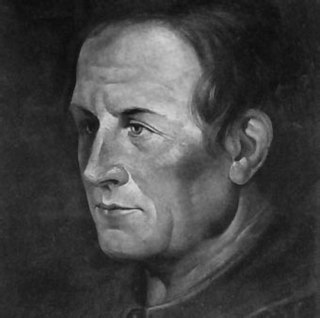
Chicano rock, also called chicano fusion, is rock music performed by Mexican American (Chicano) groups or music with themes derived from Chicano culture. Chicano Rock, to a great extent, does not refer to any single style or approach. Some of these groups do not sing in Spanish at all, or use many specific Latin instruments or sounds. The subgenre is defined by the ethnicity of its performers, and as a result covers a wide range of approaches.

Cipriano Ricardo Flores Magón was a Mexican anarchist and social reform activist. His brothers Enrique and Jesús were also active in politics. Followers of the Flores Magón brothers were known as Magonistas. He has been considered an important participant in the social movement that sparked the Mexican Revolution.

Payable on Death is the self-titled fifth studio album by Christian nu metal band P.O.D. It is the group's first album to feature guitarist Jason Truby following the controversial departure of Marcos Curiel, and their last album produced by Howard Benson. Payable on Death was released on November 4, 2003, through Atlantic and marks a notable de-emphasizing of the band's distinctive rap metal style. While a commercial disappointment compared to Satellite, it still managed to sell over 1,300,000 copies worldwide.

Eusebio Francisco Kino, SJ, often referred to as Father Kino, was an Italian Jesuit, missionary, geographer, explorer, cartographer, mathematician and astronomer born in the Bishopric of Trent, Holy Roman Empire.

The Diocese of Tucson is a Latin Church ecclesiastical territory – or diocese – of the Roman Catholic Church in southern Arizona in the United States. It is a suffragan diocese of the ecclesiastical province of the metropolitan Archdiocese of Santa Fe.

The Blind Boys of Alabama, also billed as The Five Blind Boys of Alabama, and Clarence Fountain and the Blind Boys of Alabama, is an American gospel group. The group was founded in 1939 in Talladega, Alabama, and has featured a changing roster of musicians over its history, the majority of whom are or were vision impaired.
Rob Clayton and Christian Clayton are painters based in California.

The Hotel Congress is a federally recognized historic building located in downtown Tucson, Arizona. It was built in 1918 and designed by the Los Angeles architectural firm William and Alexander Curlett as part of an expansion of Congress Street and in conjunction with the theatrical venue Rialto Theatre, which sits north of Congress Street. The rear of the building faces the historic Amtrak Southern Pacific train station, built by Southern Pacific in 1907. In addition to being a hotel, the Hotel Congress building also houses a restaurant, bar and music venue. The name "The Congress Hotel" was chosen through a naming competition organized by the Arizona Daily Star newspaper in 1918. The winning suggestion was announced on April 30, 1918, and it was submitted by Dorit Dinkel, who won $15 worth of baby bonds for having their name chosen. The Hotel Congress and its owners since 1985, Richard Oseran and Shana Oseran, have been a key cultural institution and boosters in the early 21st-century redevelopment of Downtown Tucson.
Elizabeth McGrath is an American artist and singer. She is based in California who works primarily in the fields of sculpture and animation. Her work is often evocative of the darker side of life, and she has been nicknamed Bloodbath McGrath after the subject matter of her works. Along with her career in art, from 1989 to 1999 she was the lead singer for the hardcore band Tongue, and co-founded the fanzine Censor This. From 2000–2011 she was the lead singer of the Los Angeles-born band Miss Derringer, along with her husband/songwriter Morgan Slade.

Juan Felipe Herrera is an American poet, performer, writer, cartoonist, teacher, and activist. Herrera was the 21st United States Poet Laureate from 2015 to 2017. He is a major figure in the literary field of Chicano poetry.
Stacy Lande is a contemporary lowbrow painter.
Peter Ford Young is an American painter. He is primarily known for his abstract paintings that have been widely exhibited in the United States and in Europe since the 1960s. His work is associated with Minimal Art, Post-minimalism, and Lyrical Abstraction. Young has participated in more than a hundred group exhibitions and he has had more than forty solo exhibitions in important contemporary art galleries throughout his career. He currently lives in Bisbee, Arizona.
La Luz de Jesus Gallery is a commercial art gallery located in Los Angeles, California. It is closely associated with the Lowbrow Art Movement, Kustom Kulture, and pop surrealism. It is located on the top floor of Soap Plant / Wacko.

Mexican muralism refers to the art project initially funded by the Mexican government in the immediate wake of the Mexican Revolution (1910–1920) to depict visions of Mexico's past, present, and future, transforming the walls of many public buildings into didactic scenes designed to reshape Mexicans' understanding of the nation's history. The murals, large artworks painted onto the walls themselves had social, political, and historical messages. Beginning in the 1920s, the muralist project was headed by a group of artists known as "The Big Three" or "The Three Greats". This group was composed of Diego Rivera, José Clemente Orozco and David Alfaro Siqueiros. Although not as prominent as the Big Three, women also created murals in Mexico. From the 1920s to the 1970s, murals with nationalistic, social and political messages were created in many public settings such as chapels, schools, government buildings, and much more. The popularity of the Mexican muralist project started a tradition which continues to this day in Mexico; a tradition that has had a significant impact in other parts of the Americas, including the United States, where it served as inspiration for the Chicano art movement.

The Second Battle of Tijuana was fought during the Mexican Revolution in June 1911. The opposing sides were rebel Magonistas and federal Mexican troops of President Francisco León de la Barra with American militia volunteers from Los Angeles, California. Tijuana was retaken by federal forces after a short battle just south of the town.

The Chicano Art Movement represents groundbreaking movements by Mexican-American artists to establish a unique artistic identity in the United States. Much of the art and the artists creating Chicano Art were heavily influenced by Chicano Movement which began in the 1960s.

John Scarpati is a professional photographer whose photography has appeared on hundreds of album and CD covers for bands and individual musicians. He is also the owner of Scarpati Studio, a photography studio that does photography and layouts for advertising campaigns, some of which have won national and regional awards. Scarpati has produced two books based on his photography: Cramp, Slash, & Burn: When Punk and Glam Were Twins and Eyes Wide Open. The first major solo art exhibit of Scarpat's work was in 1991 at Midem – Palais des Festivals in Cannes, France. The exhibit was a dye transfer print series. Scarpati's work has also appeared in publications such as the New York Times and Rolling Stone Magazine.

La Luz is an American rock band from Seattle, founded in 2012 by Shana Cleveland, Marian Li Pino, Alice Sandahl, and Abbey Blackwell. La Luz has received critical acclaim following the release of four studio albums on Hardly Art: It's Alive, Weirdo Shrine, Floating Features, the self-titled La Luz and News of the Universe on Sub Pop.
"Contigo En La Distancia" is a bolero which was written by the Cuban singer-songwriter César Portillo de la Luz when he was 24 years old. It was written in the year 1946.

A Mexican American is a resident of the United States who is of Mexican descent. Mexican American-related topics include the following:













